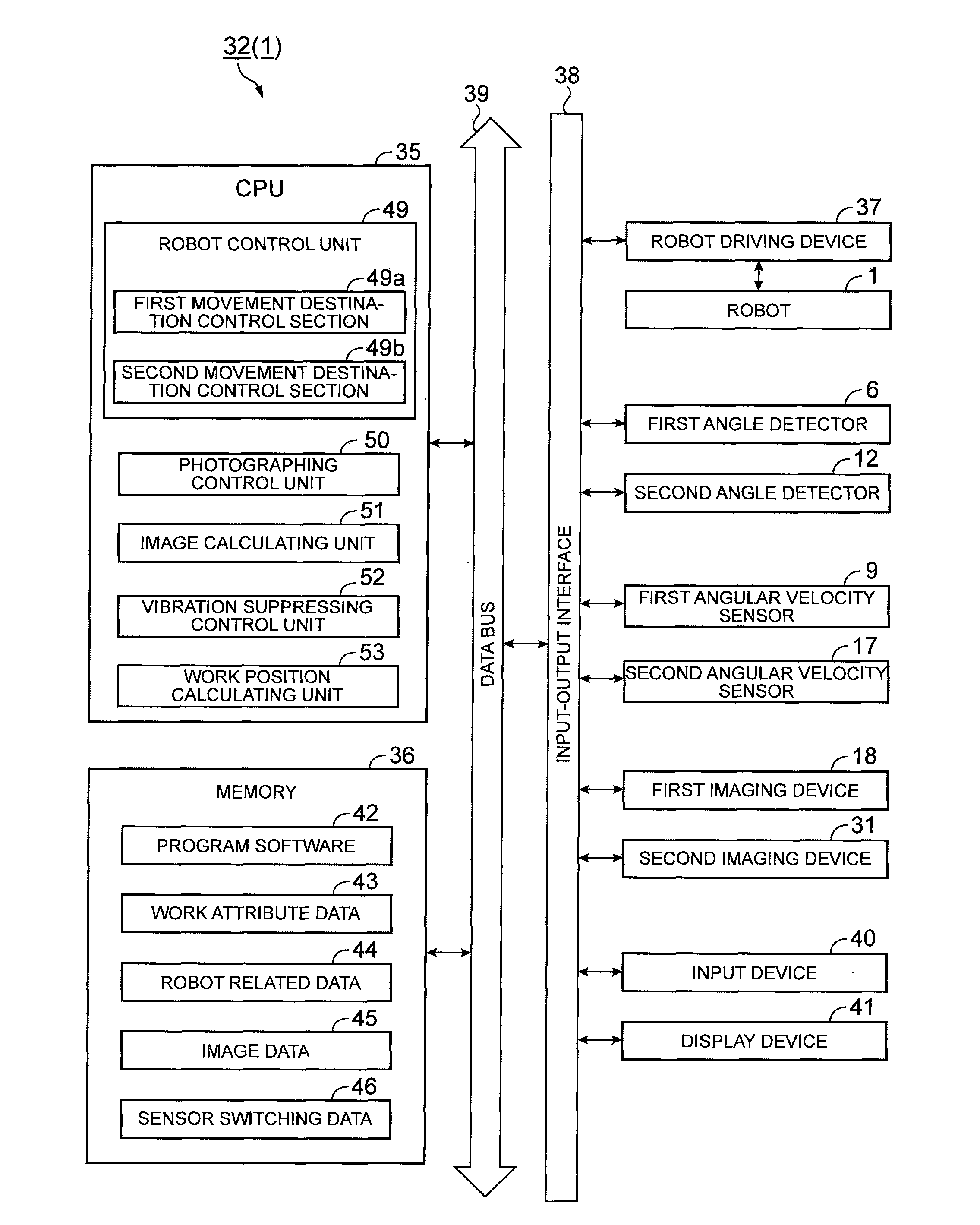Position control method and robot
- Summary
- Abstract
- Description
- Claims
- Application Information
AI Technical Summary
Benefits of technology
Problems solved by technology
Method used
Image
Examples
first embodiment
[0053]A robot according to this embodiment using a method of controlling the position of a robot hand as a characteristic will be described with reference to FIGS. 1A to 6B.
[0054]FIG. 1A is a schematic perspective view showing the configuration of the robot. FIG. 1B is a schematic cross-sectional view showing the configuration of the robot. As shown in FIGS. 1A and 1B, the robot 1 includes a base 2 that is formed to have a flat plate shape. One direction on a horizontal surface of the base 2 is assumed to be the X direction. In addition, the direction opposite to the direction of gravity is assumed to be the Z direction, and the direction that is perpendicular to the X direction and the Z direction is assumed to be the Y direction.
[0055]On the base 2, a support bar 3 is disposed. Inside the support bar 3, a hollow space is formed. This hollow space is vertically divided by a support plate 4. On the lower side of the support plate 4, a first motor 5 as a driving unit is disposed. On ...
second embodiment
[0119]Next, a robot according to an embodiment will be described with reference to FIG. 7. A difference between this embodiment and the first embodiment is that an elapsed time is used for the determination in the sensor switching determination process of Step S3 in this embodiment. Thus, the description of the same points as those of the first embodiment will be omitted, and only different points will be described. Other points are the same as those of the first embodiment.
[0120]FIG. 7 is a timing chart representing the transition of moving the hand portion to the target location. The vertical axis represents the hand portion-to-target distance 66 that is a distance between the hand portion 16 and the center of the work 22 as the target location. In the vertical axis, the upper side represents a location that is separated farther from the target location than the lower side. The horizontal axis represents the passing of time, and time progresses from the left side to the right side...
third embodiment
[0124]Next, a robot according to an embodiment will be described with reference to FIG. 8. A difference between this embodiment and the first embodiment is that the position of the hand portion 16 is detected by using a position detection sensor instead of the second imaging device 31. Thus, the description of the same points as those of the first embodiment will be omitted, and only different points will be described. Other points are the same as those of the first embodiment.
[0125]FIG. 8 is a schematic perspective view showing the configuration of the robot. As shown in FIG. 8, in the robot 76, support portions 77 that are formed longitudinally in the Z direction are disposed in three locations that are close to the periphery of the base 2. In addition, on the side of the support portion 77 in the Z direction, an ultrasonic receiver 78 is disposed. Furthermore, on the side of the elevation device 14 in the Z direction, an ultrasonic transmitter 80 is disposed. The robot 76 include...
PUM
| Property | Measurement | Unit |
|---|---|---|
| Shape | aaaaa | aaaaa |
| Distance | aaaaa | aaaaa |
Abstract
Description
Claims
Application Information
 Login to View More
Login to View More - R&D
- Intellectual Property
- Life Sciences
- Materials
- Tech Scout
- Unparalleled Data Quality
- Higher Quality Content
- 60% Fewer Hallucinations
Browse by: Latest US Patents, China's latest patents, Technical Efficacy Thesaurus, Application Domain, Technology Topic, Popular Technical Reports.
© 2025 PatSnap. All rights reserved.Legal|Privacy policy|Modern Slavery Act Transparency Statement|Sitemap|About US| Contact US: help@patsnap.com



